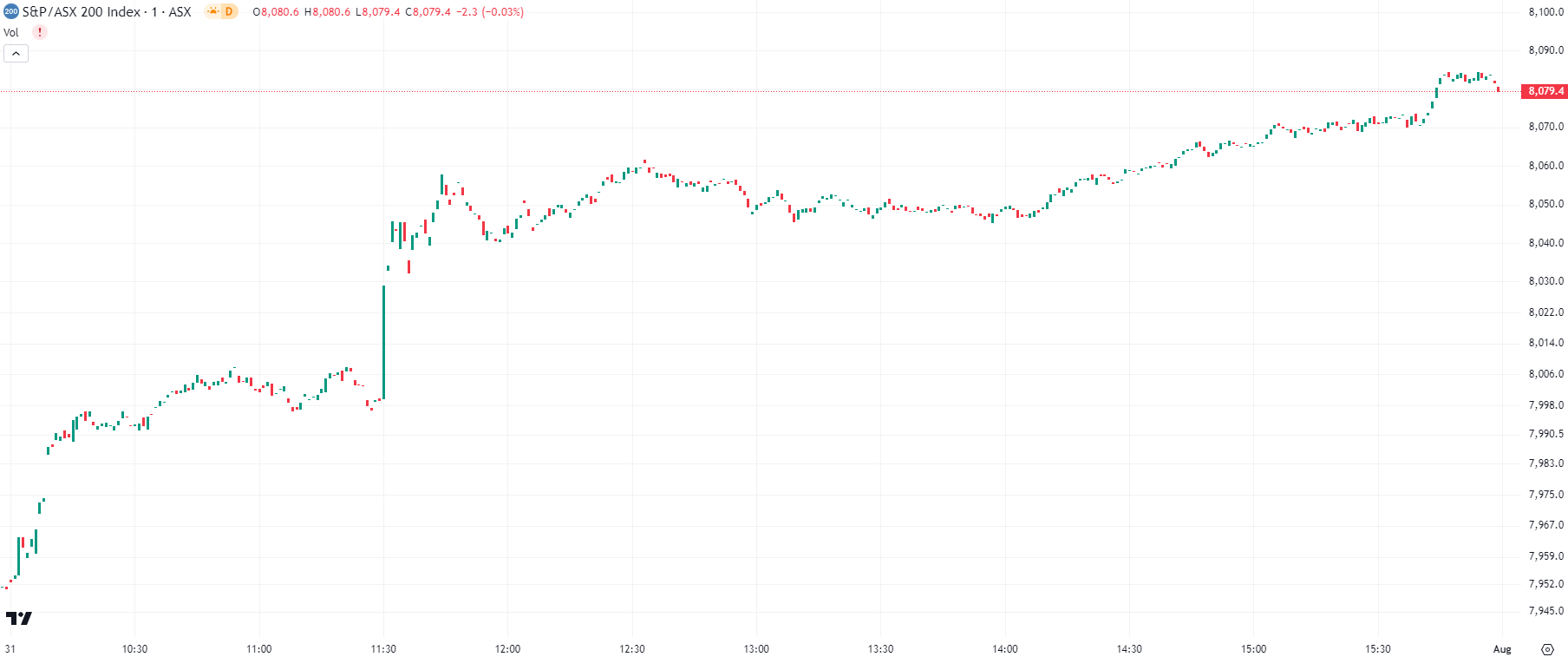When will interest rate cuts happen? Could mortgage relief come this year or not until 2025?
![]() Nick Sundich, August 1, 2024
Nick Sundich, August 1, 2024
When will interest rate cuts happen? Seemingly they will occur this year, although there is a disconnect between what investors believe and hope for and what central banks (particularly the RBA) are implying.
The RBA has lifted interest rates from 0.1% in April 2022 to 4.10% by June 2023 and a further 0.25% hike came in November to 4.35% to tackle inflation. But what comes up must come down right?
There have been some fears that rates could have been lifted further including warnings from the RBA that inflation was not coming down as fast as it had liked and ‘is not ruling anything in our out’. But yesterday’s quarterly inflation data has poured cold water on the prospect of further hikes, at least at the August board meeting. The ASX rallied to an all time high, and Wall St rallied too after speculation the Federal Reserve could cut as soon as September. So are cuts coming in Australia? Not so fast.
The RBA is nervous that inflation decline is slowing
The RBA has a new governor in Michele Bullock and is only meeting 8 times a year instead of every month. Crucially, meetings tend to occur around the times of key economic data enabling them to make better decisions and press conferences will be held afterwards, rather than just a statement posted to the bank’s website.
A statement still gets posted, however, and they all tell us the bank wants inflation within the 2-3 target range. Inflation has fallen substantially since 2022, although the pace of decline has slowed. The most recent forecast from the bank was for inflation to return to the 2-3% range in the 2nd half of 2025 and to the midpoint in 2026. Investors feared the bank could hike rates again off the back of statements such as this one:
‘Inflation is easing but has been doing so more slowly than previously expected and it remains high. The Board expects that it will be some time yet before inflation is sustainably in the target range. While recent data have been mixed, they have reinforced the need to remain vigilant to upside risks to inflation’.
‘The path of interest rates that will best ensure that inflation returns to target in a reasonable timeframe remains uncertain and the Board is not ruling anything in or out. The Board will rely upon the data and the evolving assessment of risks. In doing so, it will continue to pay close attention to developments in the global economy, trends in domestic demand, and the outlook for inflation and the labour market’.
‘The Board remains resolute in its determination to return inflation to target and will do what is necessary to achieve that outcome’.
More rate hikes appear off the table
Yesterday (Wednesday July 31), trimmed mean inflation eased to 3.9% in June, from 4% in March. Before this data, traders put in a 1 in 5 chance the bank would hike rates, but now this is just a 4 in 100 chance. And the ASX had its best day in 2 years, with the ASX200 index gaining nearly 2%.

ASX 200 index chart, log scale (Source: TradingView)
Only hours later, the Federal Reserve hinted it could begin cutting rates as soon as September. ‘The question will be whether the totality of the data and the evolving outlook in the balance of risks are consistent with rising confidence on inflation and maintaining a solid labour market’, chairman Jerome Powell said.
‘If that test is met, a reduction in our policy rate could be on the table as soon as the next meeting in September’.
When will interest rate cuts happen?
It is anyone’s guess. Obviously inflation is more under control in the US – inflation was 2.5% in the June quarter, and unemployment is inching up. So while Aussie investors are excited, don’t expect cuts here until this happens. Neither expect any specific targets – the bank learned its lesson from saying ‘no rate hikes until 2024’, with Phillip Lowe being heavily scrutinised for breaking that promise, scruitany that only eased at his eventual departure.
But maybe even don’t rule out the prospect of interest rate increases. Judo Bank’s Warren Hogan made headlines earlier this year for predicting not one further interest rate rise, but three – to 5.1% – up to the end of 2024. Argue all you like about Judo Bank as an investment, but he was the only one of 29 surveyed analysts by the AFR to predict the exact number of rate hikes in 2023.
He may not be right again, but he’s certainly not to be ignored. After all, many peers forecast just one or two hikes, some thought cuts would begin. Even after yesterday, he was still saying it is a 50-50 chance that there could be any hikes at all, given inflation was still above what the RBA thought a couple of months ago.
Bond traders are pricing in the first cut by February fully, and an 80% chance by the end of this financial year. Other economists now expect cuts in the next 6 months, Westpac’s Luci Ellis and CBA’s Gareth Aird both predict a cut in November. NAB and ANZ expect rate cuts next year, albeit early on – during the March quarter.
So what will it mean for stocks?
We’ve covered the broader question of how interest rates impact stocks in greater detail here. To summarise here, interest rate cuts will:
- Make equities more appealing as an asset class
- Reduce higher borrowing costs for companies in stocks
- Impact company valuations
The second is blatantly obvious, although not all companies in debt will derive the same benefit. When interest rates are low, investors are more likely to invest their capital in stocks because there is less reward available from other investments such as bonds and cash. Low interest rates make stock investing attractive due to the potential for higher returns.
However, when rates increase, stocks may become less attractive to investors since they offer comparatively lower returns. Of course, there will always be stocks that go up when interest rates are higher and those that go down when interest rates are lower.
Rates may also increase company valuations for a number of reasons, including lowering the discount rate in the DCF model or lowered borrowing costs factored into a company’s forward earnings. While mortgage holders will inevitably be watching interest rate calls closely, so should stock investors, because they could be impacted just as significantly.
What are the Best ASX Stocks to invest in?
Check our buy/sell tips
Blog Categories
Get Our Top 5 ASX Stocks for FY26
Recent Posts
DroneShield Bags A$50M Deal as Repeat Buyers Fuel Its Flight Path
DroneShield’s A$50M Contract Sends a Clear Signal DroneShield (ASX: DRO) announced this morning that it has secured a very large…
Challenger (ASX:CGF): Apollo’s sell out was their loss but other investors’ gain!
When we last wrote about Challenger (ASX:CGF), in September 2024, investors were panicking because Apollo (a global fund manager that…



